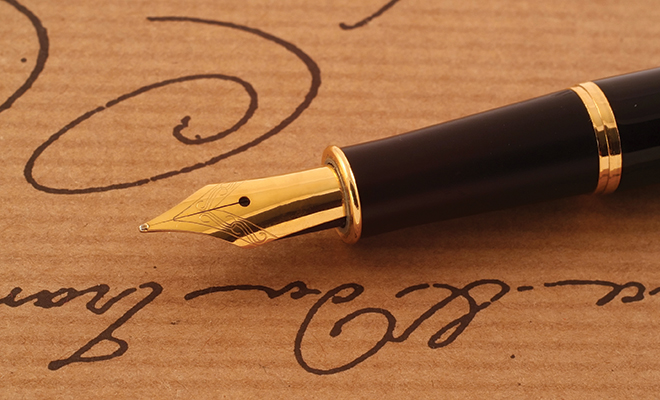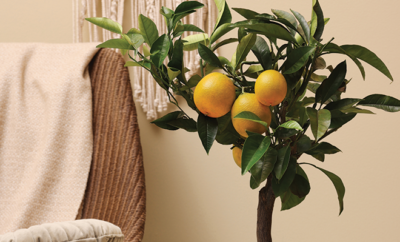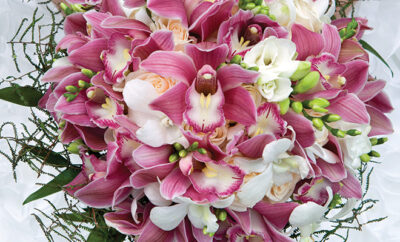
Pens to Help You Rediscover the Lost Art of Handwriting
When was the last time you received a handwritten letter? As people turn to the internet for their correspondence needs, handwriting becomes more precious. According to the USPS, the average American household receives 20 pieces of personal correspondence in the mail per year. Of those, 75 percent are greeting cards, leaving just five personal notes or letters per year. Imagine writing a single handwritten note and making someone’s whole year 20 percent better!
Several psychological studies have also shown that writing is good for health. It helps relieve stress and strengthen the immune system. It also encourages greater self-disclosure than typing, so it is useful for therapy clients who need to process through intense emotional experiences. Finally, a study has proven that writing by hand helps people retain information better than typing notes because its slower speed forces them to summarize the information into their own words as they write.
There are joys of handwriting that a keyboard just can’t offer. When bold, italic or underlined formatting just won’t cut it, you can hand-draw your own curls of excitement or double strokes of emphasis to the letters, even shaping them into pictures and sketches. Your readers will be able to see beyond the words into the “body language” of your writing, picking up on subtle changes to the letters as your tone changes. Handwriting is an extremely personalized art.
Are you ready to beautify your handwriting? There are many products on the market to help you express yourself as boldly or uniquely as you please. Most people are familiar with budget pens that dispense ink using a small ball at the tip: ballpoint pens, which have oil-based ink to write slowly and dry without smudging, rollerball pens using water-based inks that allow for a more rapid and smooth writing experience and gel pens, which can carry more vibrant ink colors but tend to write less consistently than the previous types. But how about pens that let ink flow onto the paper more freely and offer a luxurious, elegant writing experience?
The aesthetics of writing can be fully appreciated using a fountain pen, which came into use in Europe in the 17th century but has evolved considerably since then. Today’s top-of-the-line fountain pens can be refilled by changing out the ink cartridge or using bottled ink, but disposable models are also available for newcomers to the craft. The most expensive part of a luxury fountain pen is the nib, a metal point that draws ink out of the pen onto the paper through a thin slit using capillary action. The nib can be made out of steel, less expensive but more brittle, or gold, which offers flexibility under the pressure of writing.
For the beginner fountain pen user, the entirely disposable Pilot Varsity or the Platinum Preppy, with a replaceable ink cartridge, cost around $3 and $5, respectively. One step up, the metal-barreled Pilot Metropolitan with multiple nib sizes takes disposable cartridges or can be refilled from bottled ink is $20, and is the highly reviewed Lamy Safari with replaceable cartridges runs around $30. Then there’s the TWSBI ECO for about $50, which has a plastic barrel but holds three times as much ink as other pens and can be refilled from a bottle. For those who want a luxury pen, the Lamy 2000, at $200, is a luxury pen with a 14K gold nib and a minimalist modern design.
To add extra flair to handwriting, brush pens are an elegant option. They are made with varying sensitivity levels, but they all write with a thicker or thinner line depending on how much pressure is applied. They are mainly used for hand lettering and calligraphy because they require a slower, steadier hand than a fountain pen. One high-quality brush pen is the Pentel Standard Brush Pen at $6 to $10, which comes in various sizes and stiffnesses of tips and can be refilled. One step up is the Kuretake Zig Cocoiro Letter Pen Superior, which carries an extra-fine tip and costs about $22.
To give a splash of color to your writing, try the Royal Talens Ecoline Watercolor Brush Pen, which comes in a 15-color set for about $45 and should be used with absorbent paper to grip its wet ink. For a more practical everyday writing tool that can still add color to regular paper, try a fineliner felt tip pen such as the classic Stabilo 88, which costs around $1 per pen, but you’ll have a hard time selecting fewer than the full 47 colors available.
We’ve only brushed the surface of all the different pens available. To discover the art of your own personalized handwriting, go for a hands-on experience with your first fountain pen or brush pen. ■
Sources: prc.gov, apa.org, wiley.com, sagepub.com, pens.com, jetpens.com, wikipedia.org, bestfountainpen.com and gentlemanstationer.com.







